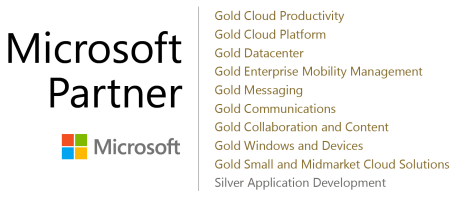In today’s digital landscape, technology evolves at an unprecedented rate, shaping the way businesses operate and thrive. As the transition from Windows 10 to Windows 11 becomes inevitable, forward-thinking organizations are not only embracing the new operating system but also seizing the opportunity to refresh their devices.
If you’re a tech leader navigating this transformative journey, then you’ve come to the right place. Before you act, you’ll need to understand,
- The potential risks of delaying the transition to Windows 11,
- The benefits of regular device upgrades, and finally,
- The critical role of lifecycle management in ensuring both a seamless transition to the new OS and future IT events.
Read on to discover why upgrading your devices alongside the shift to Windows 11 is not just wise for your organization in the short-term, but a strategic move for the long-term.
The Risks of Procrastination—Don’t Wait for Windows 11
The countdown to Windows 11 has already begun, and the risks of postponing the transition from Windows 10 are potentially significant. Organizations opting to delay may encounter:
- Security Vulnerabilities: With the official end of Windows 10 support in October 2025, sticking to an outdated OS exposes your business to potential security breaches and cyber threats. Newer technology offers enhanced security features that shield your data from evolving risks.
- Compatibility Challenges: Waiting to upgrade your devices may result in compatibility issues between aging hardware and the advanced functionalities of Windows 11. This can hinder user experience, productivity, and your ability to leverage the full potential of the new OS.
- Missed Innovations: Windows 11 introduces a range of exciting features designed to boost efficiency and user experience. Delaying the transition to Windows 11 could mean forgoing these innovations, placing your organization at a competitive disadvantage.
Unlocking the Power of Regular Device Upgrades
Beyond the imminent shift to Windows 11, regular device upgrades present a myriad of advantages that go beyond the software itself, including:
- Enhanced Performance and Productivity: Newer hardware is optimized to run the latest software, seamlessly. Upgraded devices provide faster processing speeds, smoother multitasking, and quicker boot times—that translates to enhanced employee productivity and satisfaction.
- Future-Proofing Your Operations: By investing in modern devices, you effectively future-proof your business against rapid technological changes. This proactive approach ensures your infrastructure remains adaptable to emerging technologies, maintaining your competitive edge as the market changes in the face of new digital tools.
- Improved Security: Up-to-date devices come equipped with advanced security features that complement the protective measures of Windows 11. So, if you want to safeguard sensitive data and maintain customer trust, upgrade to new hardware that’s fortified against evolving cyber threats.
- Elevated User Experience: The latest devices offer ergonomic designs, high-resolution displays, and intuitive touchscreens that enhance user experience and satisfaction. An upgraded device fleet can positively impact employee morale and retention.
Lifecycle Management is the Cornerstone of a Seamless Transition
A robust lifecycle management solution is a pivotal strategy in bridging the gap between the shift to Windows 11 and device upgrades. With a customized modern IT lifecycle management program, the entire upgrade process becomes effortless thanks to support from the following:
- Strategic Planning: Craft a customized plan that aligns device upgrades with the Windows 11 transition and other IT events, ensuring minimal disruption and maximum efficiency.
- Timely Upgrades: Implement a schedule for systematic device upgrades, preventing outdated hardware from becoming a bottleneck in your operations.
- Cost-Efficiency: A well-managed lifecycle reduces unexpected expenses by spreading device upgrades strategically and optimizing your technology budget.
- Minimal Downtime: With a comprehensive lifecycle management plan, the transition to Windows 11 and device upgrades can be strategically pre-planned, assessed, and executed to minimize downtime and maintain continuous operations.
Seize the Moment: Upgrade Your Devices Now for a Seamless Windows 11 Transition
Windows 10 is giving way to Windows 11. As organizations embrace this evolution, the benefits of adopting Windows 11 with refreshed devices becomes clear.
A modern IT lifecycle management program is key to ensuring a smooth, efficient, and cost-effective journey. Don’t wait until 2025 to make this major transition; act now to propel your organization forward with a robust infrastructure, fortified security, and empowered stakeholders.
Don’t let outdated technology hold you back. You can rely on UDT to provide you with customized lifecycle management solutions that align precisely with your organization’s unique needs and goals.
Whether you’re ready to make the switch or want some additional information around how to navigate the transition to Windows 11, you can refer to our free, comprehensive guide on how to prepare your institution for the pending OS update and how to adopt Windows 11 successfully.

Your Guide To Transitioning to Windows 11
UDT’s team of experts have pulled together a guide to keep you informed on what to expect and empower you with considerations you’ll need to think about as you navigate the transition.